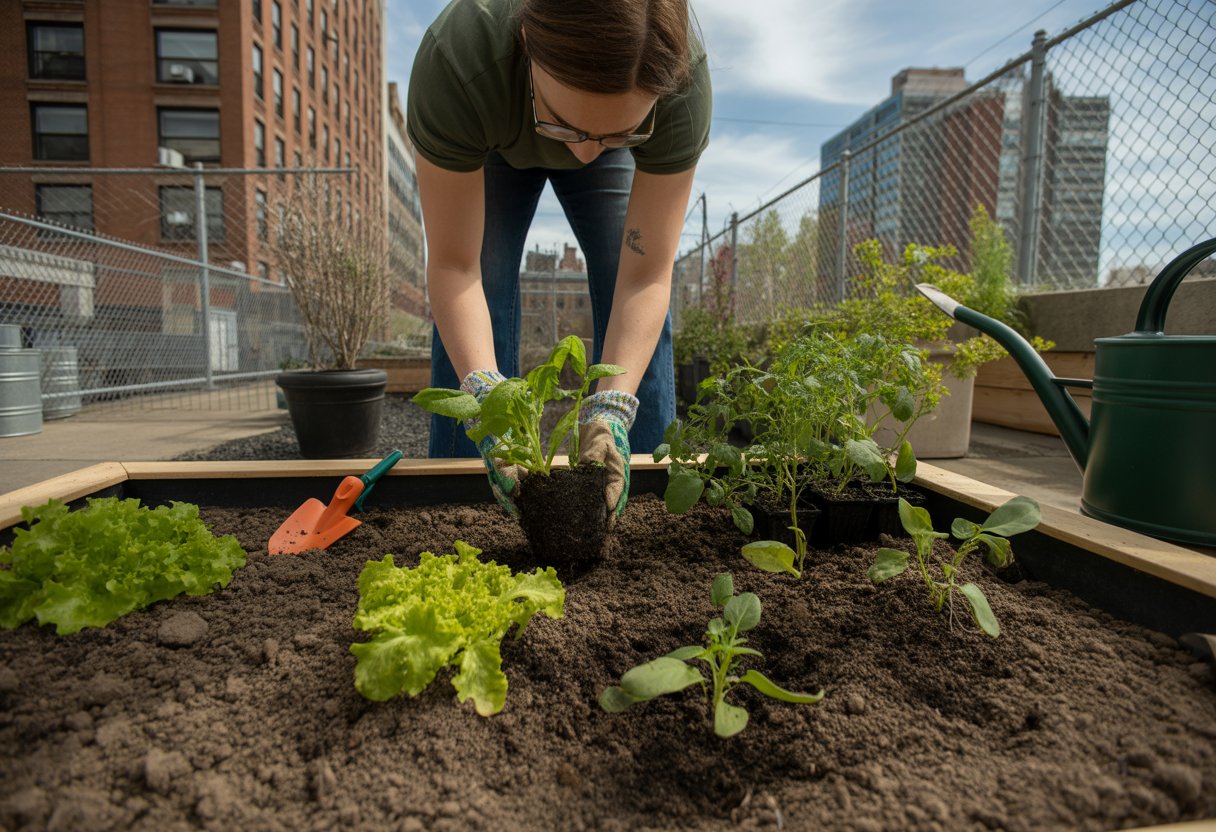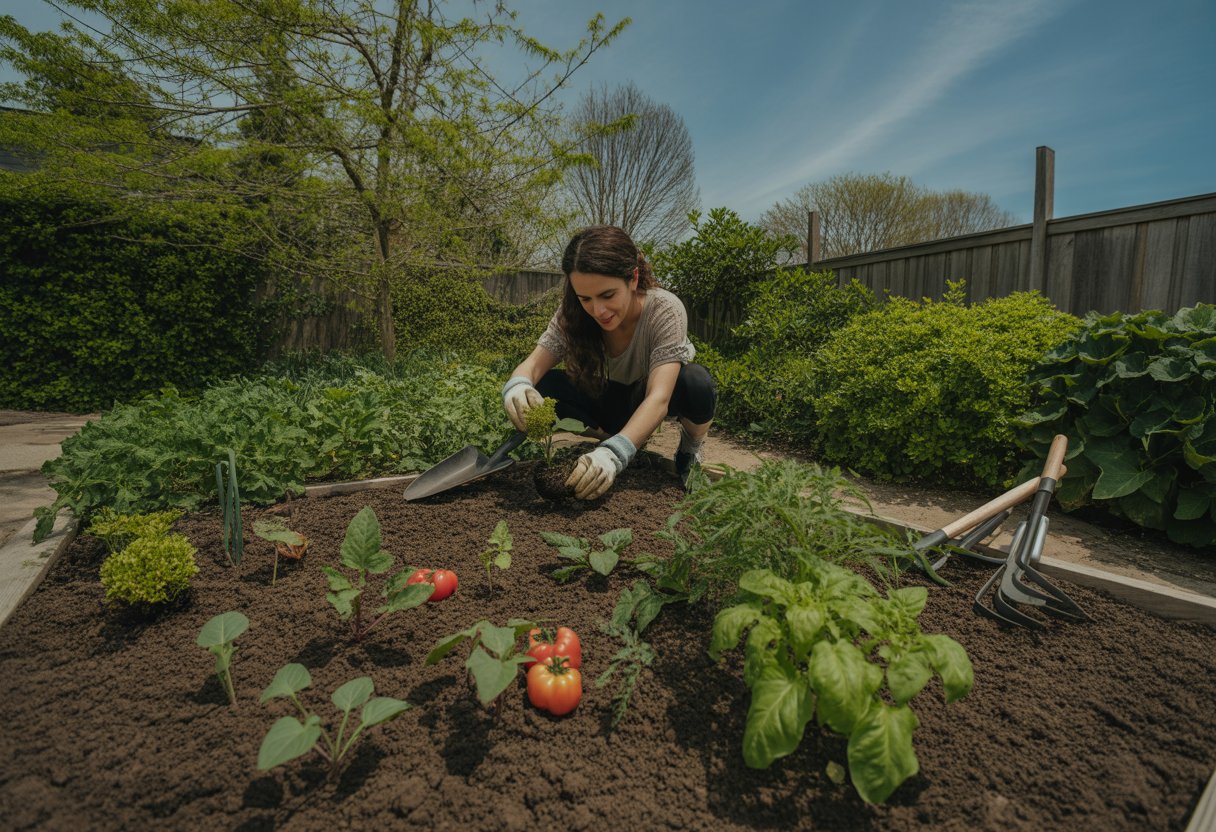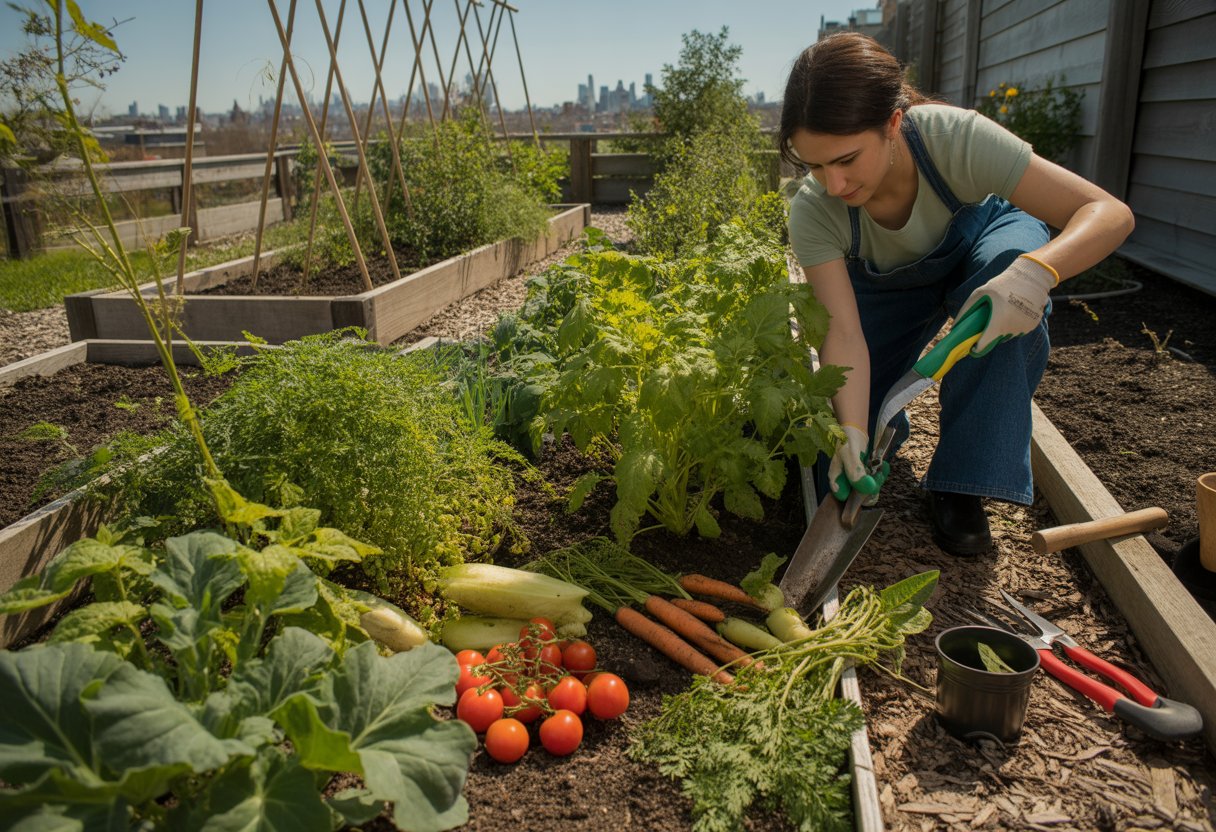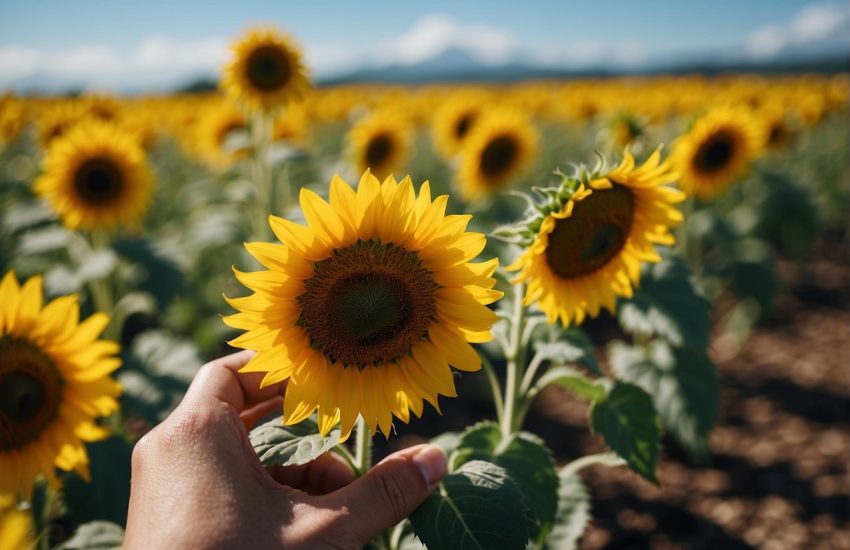Vegetable Planting Guide New York: Seasonal Tips for Successful Growing
Vegetable planting in New York means paying close attention to the state’s unpredictable climate and short growing season. Knowing when to sow seeds and when to transplant seedlings can make or break your harvest.
The key here? Start cool-weather crops in early spring, and wait until after the last frost—usually mid-May—to plant warm-weather crops.

Regional differences matter, too. Northern and southern New York have different frost dates and soil quirks, so gardeners need to adapt.
Soil preparation and picking crops that match your local conditions are both essential for a productive garden.
Understanding the New York Vegetable Growing Climate
New York’s climate is all over the place, depending on where you live. Temperature swings, sunlight, and the length of the growing season all play a role in what you can grow and when.
Hardiness Zones and Regional Differences
USDA hardiness zones 3 to 7 stretch across New York. Up north, in places like the Adirondacks, zone 3 brings colder winters and short growing periods.
Down south—think New York City and Long Island—you’re in zones 6 or 7, which means a longer, warmer season.
Cold-hardy crops like kale and carrots love zones 3 to 5. On the other hand, heat-loving plants like tomatoes and peppers do better in zones 6 and 7.
Pick varieties that match your zone and microclimate. It really does make a difference.
Sunlight and Weather Considerations
Vegetables in New York need at least 6 to 8 hours of direct sunlight every day. Urban gardeners might have to work around shade from buildings, while rural spots usually get plenty of sun.
Spring and fall can bring wild weather swings that stress plants. Early frosts are common up north and out west. Wind can also beat up your plants, so consider windbreaks or row covers if your garden’s exposed.
Growing Seasons in New York
The growing season is short up north—about 90 days—but can stretch to 180 days down south. Last frost dates range from late April or early May in the south to late May or even June upstate.
A lot of folks use greenhouses, cold frames, or raised beds to squeeze more out of the season. These tricks help you start earlier and harvest later, which is always a win.
Essential Garden Planning and Soil Preparation
If you want your New York vegetable garden to thrive, you’ve got to plan smart. Garden layout, soil quality, fertilizing, and watering all matter—a lot.
Each one plays a role in getting good yields, especially with the region’s unpredictable weather and soil.
Garden Design and Location Selection
Pick a spot with at least 6 to 8 hours of sunlight and some wind protection. If you can, set up close to a water source—it just makes life easier.
Good drainage is key. Steer clear of spots where water pools after rain, since soggy soil wrecks roots. Flat or gently sloping land works best for garden beds.
Leave space for paths between beds so you can actually get in there to weed or harvest. Raised beds help with soil control and prevent compaction.
Arrange your plants by height and spacing so everyone gets enough sun and air.
Soil Health and Preparation
New York soils often need a little help. Test your soil’s pH and nutrients before planting—most vegetables like a pH between 6.0 and 7.0.
Mix in organic matter like compost or well-rotted manure to boost structure, fertility, and moisture retention. Don’t till too deep; just gently work amendments into the top 6-8 inches.
Clear out weeds and debris before you start. Loosen compacted soil so roots can breathe and water drains well.
Choosing the Best Mulch and Fertilizer
Mulch keeps soil temps steady, holds moisture, and keeps weeds down. Organic mulches—like straw, shredded leaves, or grass clippings—work best.
Spread a 2-3 inch layer around your plants. Just keep it away from stems to avoid rot.
Fertilizer needs depend on your soil test, but a balanced 10-10-10 works for most veggies. Side-dressing with nitrogen during growth helps leafy crops.
If you want to avoid chemical runoff, try organic options like bone meal or fish emulsion. They’re better for the soil long-term.
Irrigation and Water Management
Veggies need about 1 to 1.5 inches of water a week. Drip irrigation or soaker hoses are great because they get water right to the roots and don’t soak the leaves.
Water early in the morning so leaves dry out and you avoid fungal problems. Mulch helps soil hold onto moisture, so you don’t have to water as often.
Check the soil regularly—overwatering can rot roots, and underwatering stresses plants. Adjust your watering as the weather changes or as your plants grow.
Vegetable Planting and Crop Care Guide for New York

Timing really matters during New York’s growing season. Starting seeds, transplanting, and picking the right crops for each window gives you a better shot at a good harvest.
Starting Seeds, Transplanting, and Planting Schedules
Start cool-season veggie seeds indoors about 6-8 weeks before your last frost, which is usually mid-April for most of the state. Warm-season crops like peppers and tomatoes need 8-10 weeks indoors before transplanting.
Move seedlings outside 1-2 weeks after the last frost, but check the weather—sometimes spring isn’t quite done with us yet. Harden off your plants by gradually getting them used to the outdoors.
For direct sowing, you can plant things like lettuce and carrots as soon as the soil hits 40°F. Lettuce goes in early April, peppers wait until late May when the soil’s a warm 60°F.
Top Vegetables and Herbs for New York Gardens
Lettuce, peas, spinach, and radishes love the cool early spring. Tomatoes, peppers, and cucumbers are your go-to crops for late spring and summer.
Herbs like basil, parsley, and chives handle New York’s climate well. Wait until after frost for basil—otherwise, it just sulks. Peppers want consistent warmth, while lettuce appreciates a little shade when it’s hot.
Tomatoes and peppers need full sun and well-drained soil. Leafy greens can handle a bit more shade and cooler temps. Place your crops where they’ll get what they need.
Crop Rotation and Succession Planting
Rotate your crops by family—like tomatoes and peppers (solanaceous) or peas (leguminous)—to keep soil healthy and dodge diseases. Switch things up every year.
Succession planting works great for quick growers like lettuce or radishes. Plant a new row every 2-3 weeks so you’re not stuck with one big harvest all at once.
Mixing rotation and succession means you use your space better and keep the garden producing. For example, follow early lettuce with beans or peppers. That way, your soil gets a break and your harvest keeps coming.
Harvesting, Maintenance, and Garden Enhancements

Timing your harvest and keeping up with garden care really pays off. Adding flowers and native plants can boost biodiversity, and paying attention to fruit or houseplants can keep your space productive.
Harvest Timing and Techniques
In New York, harvest time runs from late spring through early fall, depending on the crop. For leafy greens like spinach and lettuce, pick them when leaves are 4-6 inches long.
Root crops like carrots and beets are ready when roots are about 1.5-2 inches across. Use clean, sharp tools to avoid damaging your plants.
Morning is the best time to harvest—veggies are firm and flavors are bright. Pick regularly, especially beans and peas, to keep plants producing. Don’t let overripe veggies sit, or you’ll attract pests.
Flower and Native Plant Integration
Mixing in native flowering plants like coneflowers and bee balm brings in pollinators and supports helpful insects. Plant them around veggie beds, and you’ll probably see more bees and butterflies.
Native plants usually need less water and care, which fits New York’s climate. They also give shelter to bugs that eat garden pests.
Placing flowers strategically makes the garden look better and helps it bounce back from stress. Isn’t that what every gardener wants?
Fruit and Houseplant Considerations
Fruits like tomatoes and peppers need steady watering. They also do better with support, so toss in some cages or stakes to keep them upright.
Pick fruit after its color deepens and the skin feels firm but gives a little. Lay off the heavy nitrogen fertilizers once fruit starts forming—flavor matters more than giant leaves.
Keep an eye on houseplants in your gardening space. Humidity and light can shift quickly, and some plants get fussy about that.
If you’re growing herbs inside, try placing them close to windows. It’s a simple trick that can stretch your growing season.
Check regularly for pests. Watering on a schedule helps keep plants happy and less likely to get stressed or sick.

